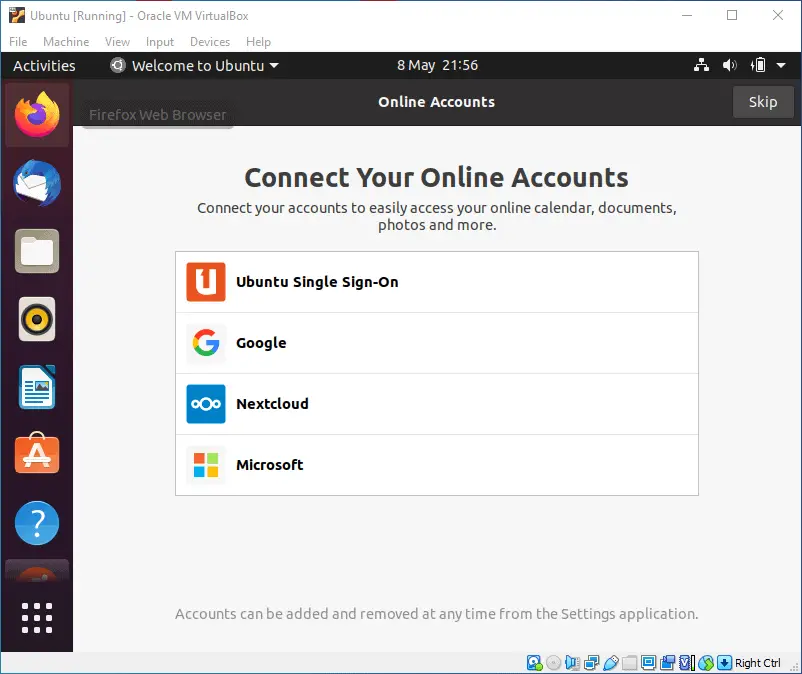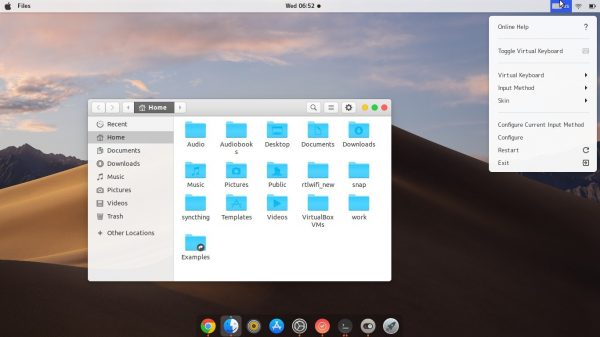
- #Install and run ubuntu on a mac mac os x
- #Install and run ubuntu on a mac install
- #Install and run ubuntu on a mac update
- #Install and run ubuntu on a mac full
I was able to single boot Ubuntu without any hiccups.īy the way, installation was easier than in the 6,1 because I didn’t need to use nomodeset once I had the LiveUSB drive it was just like installing Ubuntu on a regular PC. I created a 200 MB vfat /dev/sda1 as /boot and installed Ubuntu as usual.
#Install and run ubuntu on a mac mac os x
On a Mac Pro 5,1 (late 2010), I physically removed the hard drive containing Mac OS X and installed Ubuntu to a new drive. In this setup, Ubuntu is on /dev/sdb but mounts /dev/sda1 (the original Mac SSD), which contains /boot/, a vfat partition. I haven’t tested, but it should be a matter of using efibootmgr to reset EFI to boot Mac OS X only: sudo efibootmgr -o 80 Not that I care about having Mac OS X there, but this way I can easily restore the computer back to its original state. I just need to hold Alt while booting and I can choose “Macintosh HD” to boot. GRUB_CMDLINE_LINUX_DEFAULT="quiet splash nomodeset" sudo update-grub sudo update-grub2 After the first boot, permanently add nomodeset as a boot parameter: Edit file /etc/default/grub.
#Install and run ubuntu on a mac install
Install Broadcom drivers to use the built-in WiFi:
#Install and run ubuntu on a mac update
Insert a USB WiFi adapter, update apt-get.
#Install and run ubuntu on a mac full
Eventually it does boot to a full Ubuntu. It does take a long time to boot and a purple screen (desktop edition) is shown for a while.
Reboot the LiveUSB Ubuntu, remove the pendrive and Ubuntu should boot normally. Add nomodeset to the first entry so it looks like this: linux /boot/vmlinuz-3.19. root=UUID=242526b7-2821-473d-b0dc-9e9a48ea6364 ro nomodeset quiet splash $vt_handoff This file shouldn’t be edited manually, but for the first boot it’s OK. Mkdir fix sudo mount /dev/sdc3 fix cp fix/boot/grub/grub.cfg fix/boot/grub/ sudo nano fix/boot/grub/grub.cfg Mount the freshly installed / (replace sdc3 by the partition that contains /) In case you don’t see the boot screen, boot the LiveUSB again. Add “nomodeset” to the end of line starting with “linux”, similarly to step 3. If you see that screen, add “nomodeset” to the boot parameters by pressing “e” in the boot screen. Now it should be possible to reboot and Ubuntu should present the boot screen where different kernels can be chosen. Set Ubuntu to boot first: sudo efibootmgr -o 0,80 Install efibootmgr: sudo apt-get install efibootmgrĬheck your EFI to see what Ubuntu is called: sudo efibootmgr I did try to use rEFInd but while Ubuntu did boot, it couldn’t use the monitor, even setting nomodeset. 


Follow the steps in this tutorial to get Ubuntu to boot in EFI mode (no need for refind).
Still in Ubuntu LiveUSB, modify EFI to boot Ubuntu. Install the bootloader on the desired device. I installed it to a USB 3.0 external hard drive because I wanted to preserve Mac OS X in case somebody else inherited this computer later. Linux /install/vmlinuz file=/cdrom/preseed/ed nomodeset quiet. Press “e” and edit the boot command, adding “nomodeset”. 
You should see two icons, one saying “Macintosh HD” and another “EFI”.
Boot Mac OS X and hold Alt while booting. In the Live USB, use efibootmgr to allow EFI to boot Ubuntu. Boot the LiveUSB (boot with option nomodeset) and install Ubuntu on a hard drive. Create a LiveUSB as usual, for example using Startup Disk Creator. The easiest and most functional procedure was to: All I needed to do was boot with “nomodeset” as a boot parameter and edit the EFI bootloader. Initially, I used a third party LiveUSB creator, but later I realized that creating a regular LiveUSB works just fine. Normally I would not buy an unnecessarily expensive computer like this, but since it was free and it had 64 GB of RAM, I decided to keep it. Thanks to many resources online I was able to install full single-boot Ubuntu on a Mac Pro that I was given at work.








 0 kommentar(er)
0 kommentar(er)
